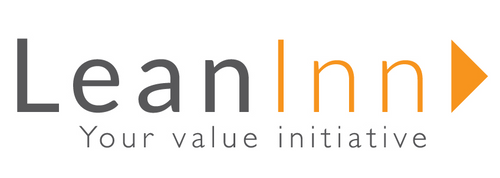Push
- Todas
- 5 porqués
- 5 whys
- A3
- Agilidad
- Agility
- Almacenamiento
- ambiental
- analisis
- aplicación
- aprender
- aprendizajes
- Article
- Artículo
- BIM
- blog
- calidad
- calidad total
- cambios
- Canvas
- certificación
- Chile
- ciclo
- Clase
- cliente
- Clientes
- Coffee
- Compañias
- Companies
- comunicación
- conocimientos
- Construcción
- Construction
- construir
- convicción
- Coronavirus
- COVID
- COVID-19
- Cultura
- Culture
- curso
- Curso Lean
- Cursos
- definir indicadores
- Demanda
- deming
- Descuentos
- design
- desperdicio
- Diagram
- Digital
- digital transformation
- E-Commerce
- Educación
- effect
- emprendedores
- emprender
- empresa
- Empresas
- English
- Entrada
- Entrenamientos
- Equipos
- eric ries
- Estandar
- estrategia
- evolución
- Experience
- Expertos
- factory
- feliz navidad
- filosofía lean
- Flexibilidad
- flujo
- Formación
- Formato A3
- Future
- futuro
- Gemba
- Gemba Walk
- Gestión
- Grafic
- Guiding
- herramientas
- Herramientas Lean
- identificar
- impacto
- implementación
- Implementation
- indicadores
- indicadores clave
- industria
- industrias
- Industry
- Information
- Innovación
- Innovation
- Inscripción
- Insutrias
- Invitación
- Ishikawa
- Kaizen
- kanban
- Key Performance Indicator
- KPI
- Last Planner® System
- Lean
- LEAN BIM
- lean bim transformation
- lean construction
- lean culture
- Lean Management
- lean manager
- Lean Mangement
- lean manufacture
- lean manufacturing
- Lean Production
- lean transformation
- leanbim
- leanconstruction
- leanculture
- LeanInn
- leanmanagement
- leanmanufacturing
- Leanmanufaturing
- leanprocess
- Learning
- LPS
- Management
- Mantenimiento
- manufacturing
- maximizar
- medición
- medir
- mejora
- Mejora Continua
- Methodologies
- Metodología
- minera
- minería
- Mining
- mvp
- Negocios
- Networking
- Noticias
- Objectives
- Objetivos
- Operaciones
- optimizacion
- optimizar
- Organización
- Organizaciones
- Organization
- Outbreak
- Pareto
- Planificación
- planificación colaborativa
- Planification
- poka yoke
- preventa
- Procesos
- process
- Processes
- productividad
- producto
- Productos
- Profesional
- Programa
- Project
- Projects
- proveedores
- Proyectos
- Pull
- Push
- PYMES
- Quality
- Recursos Humanos
- Resiliencia
- Resultados
- Results
- seguridad
- Servicios
- Shingo
- Sin categoría
- SIPOC
- Sistemas
- SMED
- standard work
- startup
- steps
- Stock
- Systems
- Tableros
- Talento
- Team
- Team Work
- Techniques
- tecnología
- Tools
- TPM
- Trabajo Estandar
- trabajoestándar
- Training
- valor
- Value
- Value Stream Mapping
- Values
- Virtual
- Visita
- VSM
- Walk
5 ago 2022
LAS DIFERENCIAS ENTRE LOS SISTEMAS PRODUCTIVOS PUSH Y PULL.
Push y Pull son sistemas productivos que se caracterizan por organizar la fabricación en función de la demanda y que se diferencian precisamente en la elección del momento en que se inicia la producción: antes o después de que se produzca la compra del producto.
En el sistema Push (empujar) el producto se fabrica con antelación. Por lo tanto, este modelo está directamente relacionado con la predicción de la demanda, ya que es indispensable saber previamente y con la máxima precisión qué productos requerirán los clientes, cuándo y en qué cantidad...
5 ago 2022
THE DIFFERENCES BETWEEN PUSH AND PULL PRODUCTION SYSTEMS.
Push and Pull are production systems that are characterized by organizing manufacturing based on demand and that differ precisely in the choice of when production starts: before or after the product is purchased.
In the Push system, the product is manufactured in advance. Therefore, this model is directly related to demand forecasting, since it is essential to know in advance and with maximum precision what products customers will require, when and in what quantity...


